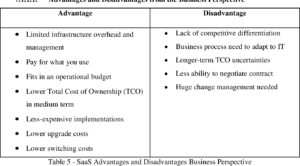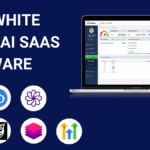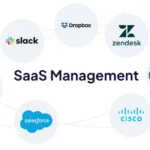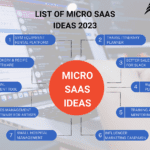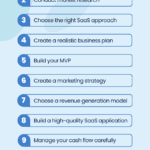SaaS benefits include cost savings, scalability, and easy access. Disadvantages are data security concerns and potential downtime.
Software as a Service (SaaS) offers numerous advantages for businesses. It reduces costs by eliminating the need for physical hardware and extensive IT maintenance. Companies can easily scale their usage based on demand, ensuring flexibility. SaaS also provides seamless access to applications from any location with an internet connection.
Despite these benefits, there are notable drawbacks. Data security remains a significant concern, as sensitive information is stored off-site. Additionally, reliance on internet connectivity can lead to potential downtime, affecting business operations. Understanding these pros and cons helps businesses make informed decisions about adopting SaaS solutions.
Introduction To Saas
Software as a Service (SaaS) is a cloud-based service. It allows users to access software applications over the internet. SaaS has transformed how businesses operate. It offers flexibility, scalability, and cost-efficiency. Users do not need to install or maintain software. Instead, they can access it via a web browser. This model has gained popularity in recent years. Let's dive into its history and current trends.
Brief History Of Saas
The concept of SaaS dates back to the 1960s. IBM and other companies used to provide software services over networks. But, the term SaaS was coined in the late 1990s. Salesforce was one of the first to popularize SaaS. They launched their Customer Relationship Management (CRM) platform in 1999. This marked a significant shift in the software delivery model. Over the years, many companies adopted SaaS. It became a mainstream business model by the mid-2000s. Today, SaaS is a multi-billion dollar industry.
Current Trends In Saas
SaaS continues to evolve with new trends. One of the major trends is Artificial Intelligence (AI). AI integration in SaaS applications enhances user experience. It offers personalized services and automation. Another trend is the rise of vertical SaaS. These are industry-specific solutions tailored for niche markets. Subscription-based pricing models are also gaining traction. They offer flexibility and affordability to users. Additionally, mobile-first SaaS applications are on the rise. More businesses are focusing on mobile-friendly interfaces. This ensures accessibility on various devices. The demand for secure SaaS solutions is also increasing. Companies are investing in robust security measures to protect data.
Credit: blog.tsl.io
The Saas Model
The Software as a Service (SaaS) model offers many benefits. It also has some disadvantages. Understanding the SaaS model can help businesses make informed decisions. This section explores how SaaS works and its deployment.
How Saas Works
SaaS delivers software applications over the internet. Users access these applications through a web browser. This means no need for local installations.
The SaaS provider hosts the application on their servers. They handle maintenance, updates, and security. This reduces the workload for businesses.
Users subscribe to the service, often on a monthly or yearly basis. This subscription model can be more cost-effective. It allows businesses to scale usage as needed.
Saas Deployment
Deploying SaaS is quick and easy. Businesses only need an internet connection and a browser. This makes it accessible from anywhere.
There are different SaaS deployment options. They include public, private, and hybrid clouds. Each has its own benefits.
- Public Cloud: Shared resources, lower costs.
- Private Cloud: Dedicated resources, higher security.
- Hybrid Cloud: Combination of both, flexible.
Choosing the right deployment depends on business needs. Security, cost, and flexibility are key factors.
SaaS providers often offer different subscription tiers. These tiers can include basic, standard, and premium plans. Each plan offers varying levels of features and support.
| Plan | Features | Cost |
|---|---|---|
| Basic | Limited features, basic support | Low |
| Standard | More features, standard support | Medium |
| Premium | All features, priority support | High |
SaaS deployment is highly customizable. Businesses can choose a plan that fits their budget and needs. This flexibility is a major advantage.
Advantages Of Saas
Software as a Service (SaaS) offers many benefits for businesses. Companies can access applications over the internet without complex installations. This model can improve efficiency and reduce costs. Let's explore some key advantages of SaaS.
Cost Reduction Strategies
SaaS helps businesses save money in multiple ways. Companies avoid high initial costs for hardware and software. They only pay for what they use, usually through a subscription model. This makes budgeting easier and reduces financial risk.
There are no maintenance fees or costly upgrades. The service provider handles all of that. This allows businesses to allocate funds to other critical areas.
Scalability And Flexibility
SaaS solutions offer unmatched scalability. Businesses can easily add or remove users based on demand. This flexibility helps companies grow without worrying about IT infrastructure.
The service can adapt to the changing needs of the business. This ensures that companies can scale up or down quickly. SaaS also supports remote work, enabling employees to access tools from anywhere.
Ease Of Use And Maintenance
SaaS applications are designed to be user-friendly. Employees can start using the software with minimal training. The intuitive interfaces make it easy for everyone to adapt.
Maintenance is handled by the service provider. Businesses do not need a dedicated IT team for software upkeep. This reduces the workload and allows staff to focus on core activities.
Automatic Updates And Integrations
SaaS providers offer automatic updates. Users always have access to the latest features and security patches. This ensures optimal performance and reduces security risks.
Many SaaS applications integrate seamlessly with other tools. This improves workflow and data management. Businesses can connect various platforms to create a unified system.
Saas In Business Operations
Software as a Service (SaaS) is transforming business operations. It offers scalable solutions for companies of all sizes. Businesses use SaaS for various tasks, from collaboration to analytics.
Enhancing Collaboration
SaaS platforms boost team collaboration. Employees can work together from any location. They use shared tools and real-time updates. This reduces delays and improves productivity.
Key benefits of SaaS for collaboration:
- Shared access to documents
- Real-time editing
- Integrated communication tools
Business Intelligence And Analytics
SaaS solutions provide powerful analytics tools. They help businesses make data-driven decisions. These tools gather data and generate insights. This improves strategic planning and operational efficiency.
Advantages of SaaS in business intelligence:
- Automated data collection
- Customizable dashboards
- Predictive analytics
Customer Relationship Management
SaaS CRM systems enhance customer management. They centralize customer information and streamline processes. This leads to better customer service and retention.
Benefits of SaaS CRM systems:
- Centralized customer data
- Automated follow-ups
- Improved customer insights
Disadvantages Of Saas
While Software as a Service (SaaS) offers many benefits, it also has drawbacks. Understanding these disadvantages helps businesses make informed decisions.
Data Security Concerns
Data security is a major concern for SaaS users. Storing data on external servers increases the risk of data breaches. Even though providers implement security measures, vulnerabilities can still exist. Businesses must trust the vendor with sensitive information. This dependency can make some companies uncomfortable.
Limited Customization
Many SaaS solutions offer limited customization options. This can hinder businesses with unique needs. Customization usually comes at an additional cost. Standardized solutions may not fit all business requirements. This lack of flexibility can restrict growth and innovation.
Vendor Lock-in Risks
Vendor lock-in is a significant risk with SaaS. Switching providers can be complex and costly. Data migration can be time-consuming and risky. Proprietary formats make it difficult to transfer data seamlessly. Long-term contracts can also tie businesses to a single vendor.
Internet Dependency
SaaS applications require a stable internet connection. Downtime can disrupt business operations. Slow internet speeds can affect performance and productivity. Businesses in remote areas may face challenges with internet reliability. Offline access is often limited or unavailable.
.png)
Credit: sparkbusinessworks.com
Comparing Saas To Traditional Software
Choosing between SaaS and traditional software can be challenging. Each has its unique benefits and drawbacks. This section will help you understand the differences.
Initial Investment Costs
Traditional software usually requires a significant upfront investment. You need to buy licenses and possibly new hardware. SaaS, on the other hand, typically has lower initial costs. You pay a subscription fee, often monthly or yearly. This can be easier for small businesses to manage.
Software Ownership And Control
With traditional software, you own the license once you buy it. You have full control over updates and customizations. SaaS does not offer the same level of ownership. You rely on the provider for updates and maintenance. This can be both a benefit and a drawback.
Long-term Financial Implications
Long-term costs can vary between SaaS and traditional software. With traditional software, you pay a large sum upfront but might save money over time. SaaS involves ongoing subscription fees. These can add up, sometimes exceeding the cost of traditional software over years.
| Aspect | SaaS | Traditional Software |
|---|---|---|
| Initial Costs | Low | High |
| Ownership | Provider-controlled | User-owned |
| Long-Term Costs | Subscription-based | One-time fee |
Understanding these differences helps businesses make better decisions. Choose the option that fits your needs and budget best.
Mitigating Saas Challenges
While Software as a Service (SaaS) offers many benefits, it also has challenges. Businesses must address these issues to fully leverage SaaS solutions. This section delves into strategies to mitigate common SaaS challenges.
Strategies For Data Security
Data security is a top concern for many businesses. To safeguard your data:
- Use strong, unique passwords for every service.
- Enable multi-factor authentication (MFA).
- Encrypt sensitive data both at rest and in transit.
- Regularly update software to patch vulnerabilities.
- Conduct frequent security audits and risk assessments.
Evaluating Saas Providers
Choosing the right provider can make a significant difference. Consider the following:
- Check the provider’s track record and customer reviews.
- Evaluate their data security measures and compliance certifications.
- Ensure they offer reliable customer support.
- Understand their uptime guarantees and service level agreements (SLAs).
- Assess their scalability to support your business growth.
Negotiating Service Agreements
Service agreements are crucial for defining terms and expectations. Key points to negotiate include:
| Aspect | Details |
|---|---|
| SLAs | Ensure the agreement includes clear uptime and performance metrics. |
| Data Ownership | Clarify data ownership rights and responsibilities. |
| Termination Clauses | Understand the terms for ending the contract. |
| Support Levels | Specify the level of support and response times you expect. |
| Cost | Negotiate pricing based on your usage and needs. |
By addressing these aspects, businesses can better manage SaaS challenges and maximize their benefits.
Credit: blog.tsl.io
Future Of Saas
The Future of SaaS looks promising with continuous advancements. SaaS, or Software as a Service, evolves rapidly. This evolution brings both benefits and challenges. Understanding these changes helps businesses adapt and thrive.
Emerging Technologies In Saas
Emerging technologies are transforming the SaaS landscape. These innovations include artificial intelligence, machine learning, and blockchain.
Artificial intelligence enhances user experience and personalizes services. AI algorithms analyze data to provide tailored recommendations.
Machine learning automates processes and improves efficiency. It helps predict user needs and optimize resources.
Blockchain ensures secure transactions and data integrity. It builds trust in SaaS applications by providing transparency.
Predictions For Saas Growth
SaaS growth continues at a rapid pace. Analysts predict significant expansion in the coming years. Here are some key predictions:
- More businesses will adopt cloud-based solutions.
- The global SaaS market will reach new heights.
- Small and medium businesses will increasingly use SaaS tools.
These predictions highlight the potential of SaaS in various industries. Companies must stay updated with these trends.
Adapting To The Evolving Saas Landscape
Businesses need to adapt to the changing SaaS landscape. Here are some strategies:
- Invest in training: Ensure employees understand new technologies.
- Monitor trends: Stay informed about industry developments.
- Collaborate with experts: Partner with SaaS providers for insights.
Adapting to these changes can provide a competitive edge. Companies that embrace innovation will thrive in the future.
Frequently Asked Questions
What Are The Benefits Of Saas?
SaaS offers cost savings, scalability, and easy accessibility. Users benefit from automatic updates and reduced IT infrastructure costs. Collaboration improves with real-time data sharing.
What Are Two Advantages And Two Disadvantages Of Saas?
Two advantages of SaaS are cost-efficiency and easy scalability. Two disadvantages are potential security risks and dependency on internet connectivity.
Why Would A Company Use Saas?
A company uses SaaS to reduce costs, scale easily, and access software from anywhere. It simplifies maintenance and updates.
Why Saas Is Better Than On Premise?
SaaS offers lower upfront costs, automatic updates, and scalability. Access data from anywhere with internet. Enhanced security and maintenance handled by providers.
Conclusion
SaaS offers significant benefits like scalability and cost-efficiency. Yet, it also presents challenges, including data security concerns and potential downtime. Assess your business needs carefully before deciding. Balancing the advantages and disadvantages is crucial. SaaS can be a game-changer if chosen wisely.
Make informed decisions to leverage its full potential.
